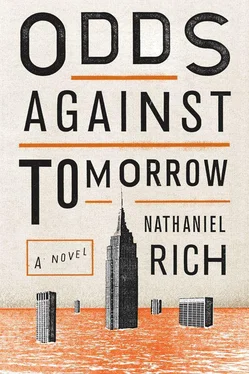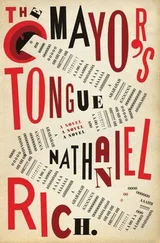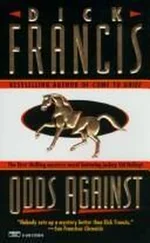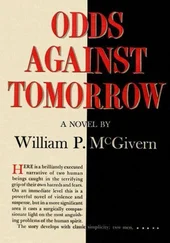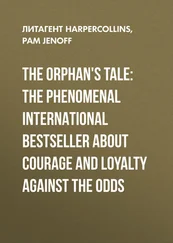Nobody stirred. The junior associate was extraordinarily conscious of the fact that he was being observed, for the first time in his career, by the distinguished executive board of Fitzsimmons Sherman. He pictured in his mind an amoeba squirming under a glass slide.
“I mean,” he said wildly, “there wouldn’t be anyone left to pay out damages to the victims’ families. So perhaps the whole question is moot.”
Sherman looked down at his papers as if he had suddenly noticed a typo. The older men chuckled silently. The young associate, having never ventured higher than the seventy-fifth floor, was evidently unaware that no executives actually worked in the Empire State. They maintained offices there, of course — with chocolate leather couches unbroken by sitting and dim mahogany lamps that emitted insufficient light for reading and tufted, untrammeled carpets, soft as sea moss — but only the department managers and their staffs reported to the building.
A senior executive remarked upon the escalating price of insurance premiums and the men took that as a cue to resume their breakfast. They made loud smacking noises as they chewed, and gulped their coffee with great thirst. Sherman required coffee to be served at room temperature so that it could be imbibed quickly, like water.
The only thing resolved that day was that Mitchell Zukor, the outspoken junior associate from the Department of Equities, Assets, and Derivatives, would be given a new assignment. He would estimate the company’s financial losses in the case of a catastrophe. It seemed a logical first step. The kid was said to be a mathematical wizard — a quant, in the old terminology. This would be a good test for him, a job that demanded statistical expertise and attention to detail. It would also teach him a lesson.
2.
“What will it cost me?” shouted Mitchell.
He was alone in his office on the seventy-fifth floor, 940 feet above the sidewalk. It was not a large office: four feet wide by six feet long. Mitchell had read that solitary cells in U.S. federal prisons had to measure at least six by nine. It was impossible to think coherently in a room so small and plain, and so insanely bright — for the fluorescent ceiling lights never turned off. Sandy Sherman had seen to that.
Mitchell had spent every night since the Sagaponack meeting — thirty-four long, debilitating nights — in this fluorescent cell. He was taking the project to heart. After two months in the Basement (as the seventy-fifth floor was known at Fitzsimmons), this was a chance to show Sherman that he was better than the Department of Equity, Assets, and Derivatives. A little luck, and he might even be promoted to the Penthouse (the seventy-sixth floor), to Risk Analysis. Risk was all that interested him; it was all he wanted to do. Really it was all he could do. Event trees, optimism bias, binomial distribution, base rate fallacy — these were his long-lost friends; he missed them like old stuffed animals. But there were no entry-level positions in Risk. You had to make it elsewhere first. And finally he had his opportunity. Risk, he hoped, would be his reward.
Sherman’s secretaries sent Mitchell records that listed his colleagues’ age, gender, salary, and aggregate profit earned for Fitzsimmons. The names had been replaced by fourteen-digit identification codes, but they were not difficult to crack. After ranking them by salary, Mitchell found himself. He was second from the bottom. Of course he was. It was his own fault. He’d had inquiries from other firms — including the colossus itself, Brumley Sansome — but Fitzsimmons had pursued Mitchell most aggressively, and he hadn’t wanted to leave anything to chance. During spring break of his senior year Fitzsimmons flew him business class from Kansas City to New York, fed him venison before the interview and oysters afterward, and in a paroxysm of gratitude Mitchell had accepted the recruiter’s first offer. Others, evidently, had bargained.
Mitchell’s assignment, it soon became clear, was simple: he was to calculate the price of each Fitzsimmons employee’s life, in dollars. As Sherman began to grow restless for results, Mitchell’s calculations became increasingly gnarled and complex. He created indices of medical records, expense reports, and personal days used; graphs showing expected future earnings, incentive pricing, value added per quarter. The numbers kept coming at him, growing like vines out of his computer, wrapping around his ankles, binding him to his swivel chair. His job was not to predict longevity — though longevity was one consideration. For the purposes of this assignment, a person’s value meant the value of his life to Fitzsimmons Sherman.
The work often required him to type the word “future” into his search engine — as in “future holdings” or “future cost of” or “future mass destruction”—and a peculiar advertisement began to pop up. “FIND OUT WHAT THE FUTURE WILL COST YOU,” it said in austere small caps. If you clicked on it, you were taken to the website of a company called FutureWorld that offered consulting services in “future prediction.” The site was a single page, linking nowhere. It listed only a phone number and e-mail address beneath the firm’s logo: an elegant pencil sketch of an open window. Mitchell often found himself, especially late at night, staring at this page in a trance. If he jumped out of the open window, where would he land?
The advertisement flickered across the screen enough times that it began to feel like a taunt.
“What will it cost me?”
The sound of his own voice disturbed him — hysterical, hoarse, echoing down the hall. He paused to see whether someone would come to his door. No one did. It was unwritten office protocol at Fitzsimmons to ignore stray agonized screams.
Mitchell continued in a whisper. “I work in the tallest building in the biggest city in the richest country in the world. So what’s my future? Annihilation? ”
He closed his eyes and tried to clear his head. But it was no good. He could feel his old pursuers, the cockroaches, feasting on him. In moments like this he imagined thousands of them, tiny hairy-legged critters climbing the walls of his stomach. Their food was fear, and they ate ravenously, lip-smackingly. No, there was nothing to do but keep working. He was getting close. The numbers were beginning to tell a story.
Shortly after three in the morning Mitchell typed “future value calculator compound interest” and the FutureWorld logo popped up. Without thinking, he composed an e-mail to the address listed. “What will the future cost me?” he wrote. “Can I afford it? Will I pay with my life?”
On his desk he noticed a can of ginger ale he’d opened several hours earlier, and he took a sip. As soon as he put it down, his e-mail icon brightened — a new message. It came from FutureWorld:
Dear Mr. Zukor,
Thank you for contacting FutureWorld. I’m so glad you did.
FutureWorld is a private consulting firm — in a manner of speaking — based in New York. We specialize in minimizing losses that may result from unforeseen or worst-case-imaginable scenarios. We will study your company’s holdings, predict all possible future outcomes, highlight the most grievous, and explain what options might be available to you. Most important, we can indemnify you against liability claims brought against you in the wake of a catastrophe.
I hope we can discuss the details of a potential partnership in person.
Since you work in the Empire State Building, you are ideally suited for our services.
Thanks,
Alec Charnoble
Director and Founder
FutureWorld
Mitchell suspected from the speed of the reply that the note was automatically generated. But what was this business about being “ideally suited” for catastrophe insurance? And how did the computer know that he was in the Empire State Building? He would call this man’s bluff — this “Alec Charnoble.”
Читать дальше
